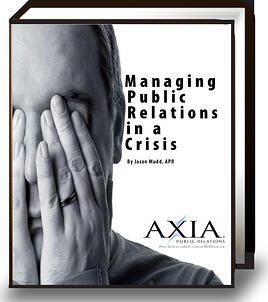Troubled Skies: Three PR Must-Dos Airlines Can Carry Out Now
There’s trouble in the skies, and the airline industry has an opportunity to do something about it. Right now.
Several people were injured Monday, July 22, when defective nose gear on a Southwest flight malfunctioned after it landed at LaGuardia Airport in New York. Passengers were jolted, along with their gear, and many exited via escape slides. A few hours later, the airport was open again for service, though witnesses continue to describe the chaos and smoke on the scene.
It’s a scene that’s all too familiar, with the recent Asiana jet crash (also in July) on the runway in San Francisco that left three people dead and at least 180 passengers injured; in May, a US Airways plane with 31 passengers landed with faulty landing gear in New Jersey.
Federal Aviation Administration reps said the crew may have noted a problem in the gear before the plane landed, and then retracted that statement to say that no pre-crash problems had been reported. The National Transportation Safety Board was also present to investigate the crash site. Investigations are pending for all recent crashes, and consumers may very well have several questions of their own before booking their next flights.
The time is right for the airline industry to craft a cohesive message to travelers about the overall safety of flight. This could include PSAs about technological advancements for flight safety, the stats about air travel versus car travel risks and new safety measures like burn-proof fabrics. This may not be enough, but it would be a start toward a crisis communications message that would begin to restore some consumer faith in flight. The message could lay the groundwork for a new public service campaign, helping millions of business and recreational travelers get a big-picture perspective of the safety measures that have been mandated and carried out in recent years.
Second, airlines that have enjoyed long-time records of accidents and errors will need to step up and shout out with their own messages. The reputation for the flight industry is certainly taking some hard hits, and not every airline has experienced accidents related to allegedly inexperienced pilots or overuse of automated flight systems. Many airlines have maintained strong and solid safety records and may be inadvertently lumped into the negative swirl around their peers’ decisions. Their response messages could include data from annual reports and stories from real passengers who continue to build their allegiances to these safe airlines.
Additionally, many PR success stories circulate about the value of communicating the actual experience and benefits of a product or service, and not just touting its features. In this case, airlines could invite audiences to view video clips of airline safety measures happening in real time and hear the statements of those who make that safety their life’s work. (Of course, the trick here is to share this experience of going behind the scenes without giving away information that could jeopardize passenger safety; that’s where seasoned PR professionals can roll up their sleeves and show their prowess.)
If your business has been lumped into a bad reputation storm that’s brewing over your industry, take heart. The right PR firm can help you develop a proactive message strategy that takes your brand to new heights. Contact Axia Public Relations today to get that plan off the ground.
By Jason Mudd, APR
- Jason Mudd, APR, is the CEO of Axia Public Relations, a public relations firm specializing in national public relations campaigns. He is an Emmy-award-winning, accredited public relations practitioner, speaker, author and entrepreneur. He has worked with great brands such as American Airlines, Dave & Buster’s, Florida Blue, H&R Block, Hilton, HP, Miller Lite, New York Life, Pizza Hut, Ray Charles, Verizon and emerging brands like Brightway Insurance, Pragmatic Works and It Works! Global. Learn more at www.axiapr.com.
Many businesses will face a public relations crisis this year. Statistics show that more than half of them will be out of business within two years.
Learn to Survive
Get Our Ebook:
Managing Public Relations in a Crisis |
This 24-page guide will teach you:
|
Plus you’ll receive a printable step-by-step guide to creating your own crisis plan so you’ll be prepared when a crisis happens to your company.
Get it Now!
Topics: crisis communications



Comment on This Article